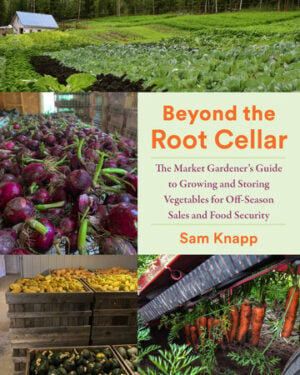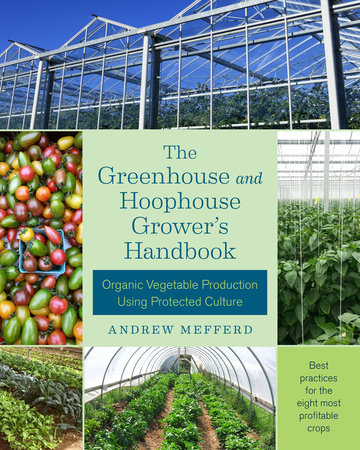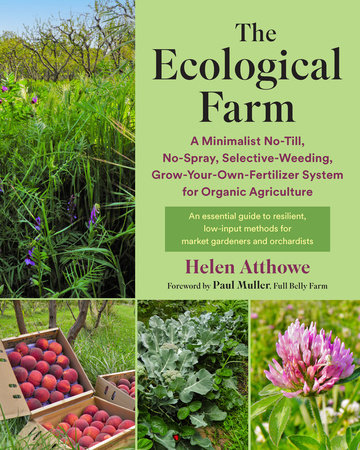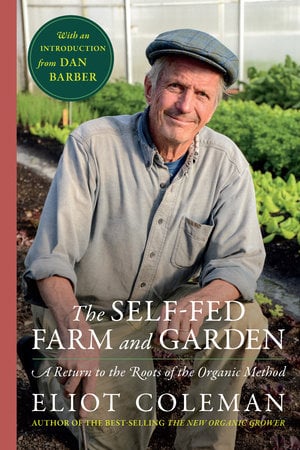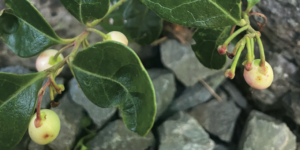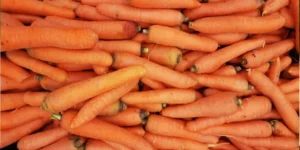Beyond the Root Cellar: Storage Room Conditions
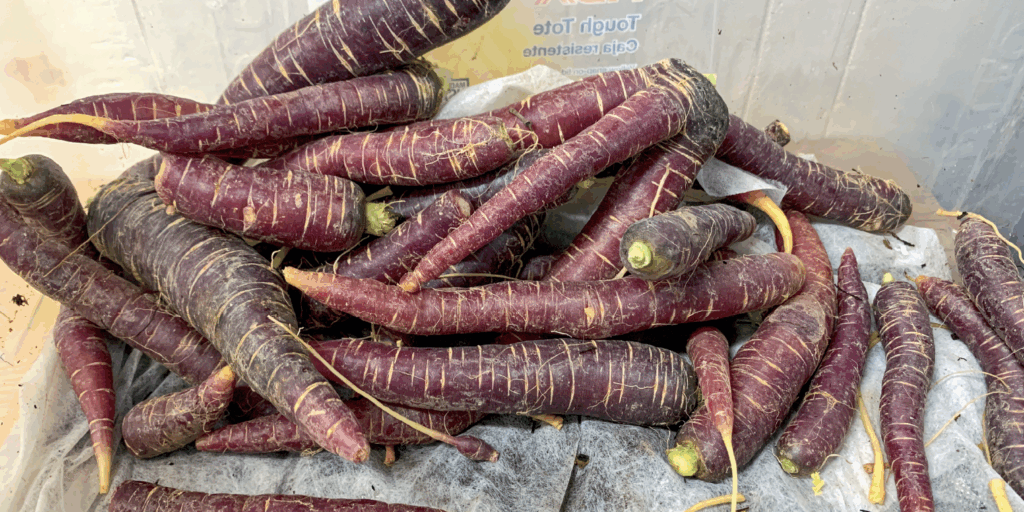
After all the harvesting, trimming, curing, washing, and grading, it’s time to put those veggies into storage. Just toss them in, right? Not exactly. As with other aspects of storage farming, there’s some logistical planning that will ease the process of actually placing crops into their winter abodes.
Part of that is ensuring you’re set up beforehand—that you’re prepared to give the various crops what they need in terms of storage conditions and space. The first year I stored crops commercially, I did not give enough thought to storage containers nor how to arrange them in my cold room. I forced myself to make decisions on the fly, some of which I regretted later in the winter.
There’s also that critical period just after crops go into storage. In the first days and weeks, the veggies will show signs of softening if the air is too dry and might begin sprouting if the room is too warm. Condensation will form inside containers and on the crops if there’s inadequate ventilation. It’s crucial to be observant during this time and to make changes if necessary. By acting quickly, you can usually remedy small problems before they balloon into insurmountable ones.
Storage Room Conditions
Success in long-term storage comes down to nailing the storage conditions, of which temperature and humidity are the most important. The goal is to maintain dormancy in our crops while minimizing decay and desiccation (moisture loss). If you grow many different crops, then it might seem like a daunting task to provide the right temperatures and humidities for all of them.
Lucky for us, many common storage crops prefer similar conditions. Depending on what you grow and store, though, you might need to provide four or five different sets of conditions to best meet your crops’ needs. If that’s not possible, you’ll need to decide which crops get ideal storage conditions and which crops don’t.
The Cold and Damp Group
32°F (0°C) and above 98 percent RH
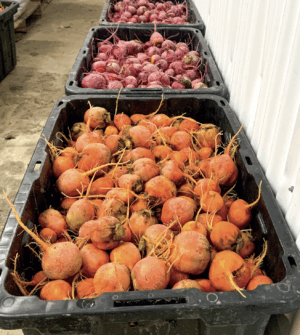
The freezing point of water decreases when you dissolve things in it—things such as salts and carbohydrates in vegetables. The average freezing point of carrots and beets, for example, is actually around 29°F (−1.7°C). Keeping the storage temperature at 32°F gives you a small buffer against inadequate airflow and cold spots, as well as power outages should they happen. It also prevents any water used for humidifying the space from freezing. As for relative humidity, damp means that it should be at or above 98 percent.
Most of the root crops fall into this group, including beets, carrots, celeriac, parsnips, radishes, rutabagas, sunchokes, and turnips. So do leafy and fleshy brassicas, including Brussels sprouts, cabbage, kale, and kohlrabi. Some homesteaders advise storing brassicas and other crops separately to avoid imparting a cabbage-like flavor to other veggies. I’ve never had an issue with this despite many years of storing these crops together. In fact, I don’t know of any commercial farmers who separate these crops for the purpose of odor protection. Perhaps it becomes an issue at relatively warm storage temperatures.
The Alliums
32°F (0°C) and between 60 and 70 percent RH
Classic allium crops, including garlic, onions, and shallots, have similar responses to different temperatures and humidities in storage. Alliums can handle a range of storage temperatures above 32°F and still maintain acceptable storage lives. What’s crucial is keeping them dry, preferably between about 60 and 70 percent RH. Despite what you might read or hear, alliums store best when kept cold, around 32°F. There’s a lot of research to back this up, as well as firsthand accounts from farmers. Temperatures near freezing inhibit both shoot and root growth—which are the main reasons for moisture loss that leads to squishy bulbs—while also slowing down pathogens.
A problem shared by many storage farmers who grow a diverse set of crops is creating a separate, cold but dry storage space for the alliums. Many of us don’t grow alliums in large enough quantities to justify this, and we store our alliums at less-than-optimal temperatures in relatively dry hallways, sheds, barns, or pack-room corners without modifying temperature too much. So, what happens at higher temperatures?
Very warm temps (above 86°F, or 30°C) also inhibit both sprouting and root growth. At these high temps, the relative humidity needs to be around 80 to 90 percent to prevent drying, but this combination can also promote pathogen growth. Most farmers, though, aren’t regularly heating spaces into the 80s and above.
Garlic and onions respond differently to storage in intermediate temperatures. If well cured, onions usually do well in temperatures up to about 50°F (10°C), but you’ll see earlier sprouting and rotting the warmer it gets. Garlic, on the other hand, sprouts quickly when stored between 40 and 50°F (4 and 10°C)—around three to four months after harvest, depending on the variety.
Potatoes
38 to 45°F (3 to 7°C) and above 95 percent RH
Potatoes store best in damp conditions above 95 percent RH, but the optimal storage temperature depends on your goals. Potatoes are in their own storage group because cold-storage temperatures— near freezing, from 32 to 35°F (0 to 2°C)—can injure potatoes over time, manifesting as browning flesh and surface mold, and temperatures above 45°F (7°C) lead to early sprouting. Since most small-to-medium farms aren’t selling potatoes for fries or chips, their ideal storage temps range from 38 to 45°F. (Sources differ on the lower end of the optimum range; I’ve gone for the middle ground with 38°F.)
At the lower end, potatoes will acquire more sweetness and may excessively brown when fried, but lower temperatures tend to increase storage life. At the higher end, the potatoes will convert less starch to sugar (preventing browning when fried), but they will also sprout sooner.
Sweet Potatoes
57 to 60°F (14 to 16°C) and between 85 and 90 percent RH
Sweet potatoes, unlike the other root crops, cannot tolerate low temperatures. They start accumulating chilling injury below 54°F (12°C). It only takes two to three weeks at 45°F (7°C) for outward signs of chilling injury to show. The best storage temperatures appear to be between 57 and 60°F, and humidity between 85 and 90 percent toes the line between preserving moisture and preventing mold growth. Storage temperatures above 66°F (19°C) will lead to excessive sprouting after a few months.
Winter Squash and Pumpkins
50 to 55°F (10 to 13°C) and between 50 and 70 percent RH
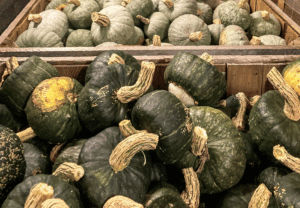
Winter squash and pumpkins, despite their ubiquity, are tropical plants and cannot tolerate low temperatures in storage or otherwise. Their sweet spot is between 50 and 55°F.
At lower temperatures they accumulate chilling injury, which usually shows first as pockmarked skin. Higher temperatures speed up their deterioration and cause green varieties to yellow.
The lower the storage temperature, the faster chilling injuries develop; at 41°F (5°C), chilling injury begins showing after about a month, whereas some squash stored at 50°F (the low end of the optimum range) might show signs of injury after several months.
Humidity should be between 50 and 70 percent, but there are trade-offs at each end of the range. Relative humidity closer to 50 percent leads to more moisture loss, while RH closer to 70 percent leads to higher losses from storage rots.
The excerpt above is from Beyond the Root Cellar: The Market Gardeners Guide to Growing and Storing Vegetables for Off-Season Sales and Food Security by Sam Knapp. It has been adapted for the web.
Recommended Reads
Recent Articles
No heated greenhouse? No problem! Discover the secrets to thriving winter gardening without breaking the bank.
Read MoreWintergreen is the stunning evergreen groundcover that’s a game-changer for your garden! It’s cherished for its aromatic leaves, vibrant fall color & bright berries.
Read MoreYear-round growth without the hefty price tag of a greenhouse? Low tunnels are the cost-effective and flexible solution you’ve been looking for. Grow year-round with low tunnels!
Read MoreGrow winter carrots for a sweeter & more flavorful harvest! Ditch the bland, store-bought carrots this winter! Grow your own winter carrots for a sweeter and more flavorful twist 🥕🥕
Read More

